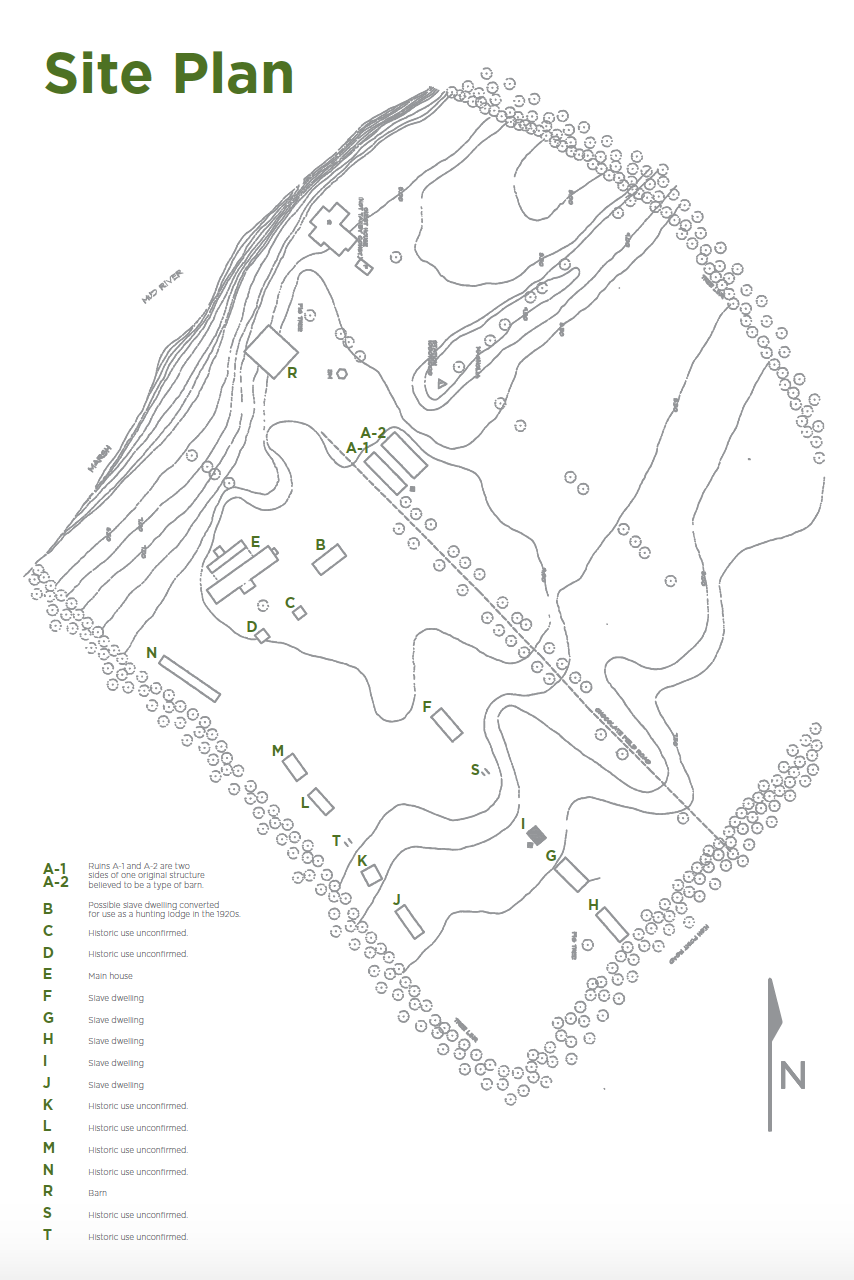CHOCOLATE PLANTATION TABBY RUINS
Chocolate Plantation is situated on the North End of Sapelo Island, Georgia. This northwestern area of Sapelo Island has been inhabited by indigenous peoples at least 4,500 years. It is thought that the name “Chocolate” is originated from a westernized translation of the native Guale name for the site, “Chuculate.” Europeans are first recorded on Sapelo with the arrival of Spanish Franciscan Missionaries in 1573. The recorded history of the island is murky from the time the Spanish settled the island to the purchase of the island by the English in 1733 and largely recorded only by the purchase and sale of land. In 1762, Patrick Mackay purchased Sapelo in its entirety and established the first large scale plantation on the North End of the island, including the land that is now Chocolate Plantation. After Mackay’s death, the island changed ownership several more times until, in 1789, Francois-Maria Loys Dumoussay de la Vauve purchased the island. Dumoussay established the “Societe de Sapelo” known in English as the Frenchmen’s Sapelo Company in 1790 with five of his business partners. The demise of the company in 1793 divided the island into multiple properties for the first time since the English purchased it. This division of land created the tract of land that is now Chocolate Plantation. In 1802, Edward Swarbreck and Thomas Spalding became co-owners of Chocolate’s tract of land. Swarbreck decided that the land could be utilized as a plantation and laid out plans for the area. The main house was built adjacent to the shore of the Mud River and adjoining salt marshes. Various support structures and outbuildings surround the main house. Finally, rows of parallel slave cabins were constructed behind the main house and the fields surrounding these structures were used to grow cotton and raise livestock.
The ruins that remain currently on the site are largely those of the tabby buildings that Swarbreck laid out. Swarbreck sold his part of the tract to Charles Rogers later in his life. The only addition that Rogers made was the construction of the Tabby Barn in 1830. In 1843, Thomas Spalding purchased the land from Charles Rogers to complete his total ownership of the island. Spalding gave the land and buildings to his son Randolph, who resided there with his wife and children until the main house burned down in 1853. The plantation remained active, without a main house, until the Civil War freed the enslaved people residing at Chocolate Plantation. The site would remain largely unused until Howard Coffin’s purchase of the island in 1912. While Coffin had a large effect on the use of the majority of the island, Chocolate Plantation was left in a state of ruin with the exception of two repair campaigns in the 1920s. The Tabby Barn was restored to its original function with a protective layer of stucco applied to the tabby walls. Coffin also renovated one of the old tabby slave cabins to serve as a hunting lodge. The final owner of the island, RJ Reynolds, purchased the land from Howard Coffin in 1934. Reynolds maintained the ruins and utilized the old plantation as hunting grounds. Annemarie Reynolds, RJ’s widow, sold the island to the State of Georgia in two transactions: the first in 1969 and finally in 1976. The Georgia Department of Natural Resources has since been in charge of maintaining the existing ruins.
The Georgia Department of Natural Resources (now the Department of Community Affairs)– Historic Preservation Division engaged Lord Aeck Sargent and Landmark Preservation, LLC (Landmark) to perform a thorough assessment of the Chocolate Plantation tabby ruins and create a Treatment and Management Plan (TMP) for their preservation. The purpose of the TMP was to identify deficiencies for each ruin, recommend treatments to remedy the deficiencies, and to define long-term preservation maintenance once deficiencies are addressed. The assessment included seventeen different ruins, as seen on the Site Plan below.








